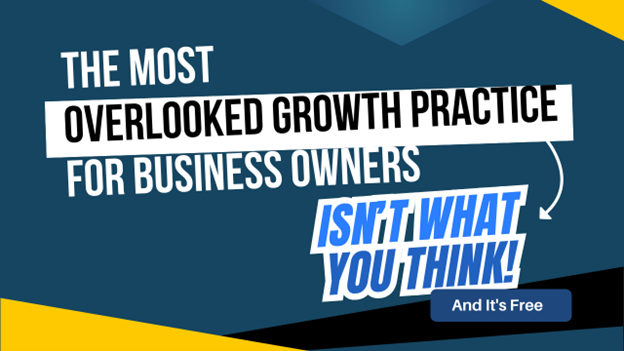How to Build Loyalty Without Spending a Dime on Ads
When you’re building a small business, it’s easy to focus on the day-to-day grind—inventory, customer service, cash flow, and that never-ending inbox.
But if you don’t know where you’re going, how will you know if you’re getting there?
That’s where a vision statement comes in. Some businesses think it’s “too corporate” or “too pretentious,” something people do to impress investors. But it’s more than a buzz phrase or a corporate checkbox.
A clear, inspiring vision is your business’s North Star—and one of the most underused tools in small business marketing. Yes, small business marketing. You don’t need to be a giant organization with stockholders to realize the power behind a well-crafted vision statement.
What Is a Vision Statement?
A vision statement is a snapshot of your business’s future—a clear, compelling declaration of where you're headed and why it matters. It’s not about what you do now; it’s about the bigger picture of what you're trying to build.
It should be:
· Aspirational
· Concise and memorable
· Future-focused
· Emotionally resonant
Examples:
“To give every kid access to affordable after-school care.”
A great vision statement is like the rallying cry of your brand. It energizes, unites, and guides. And note, it also exemplifies your tone. The example above uses the word “kid,” for instance. While not the best grammatical choice, it reflects the casual tone of the brand.
Why a Vision Statement Matters (More Than You Think)
It’s more than a bunch of clever words strung together.
1. It Aligns and Inspires Your Team
When employees understand the bigger “why” behind their work, it’s no longer just a job—it’s a mission. A clear vision gives your team something to strive for and a sense of purpose that fuels motivation and loyalty.
This is especially true for Millennials and Gen Z, who are driven by meaning, impact, and shared values. They want to work for companies that stand for something. If your business has a clear vision that aligns with their ideals, you’re no longer just an employer. You’re a movement they want to be part of.
2. It Gives Customers Something to Cheer For
People don’t just buy products. They buy into stories. Your vision helps customers understand the heart behind your brand. It shows them that when they support your business, they’re part of a bigger mission.
This emotional connection builds loyalty and transforms occasional buyers into enthusiastic advocates.
Bonus: younger generations, especially Gen Z, are more likely to support brands that align with their values and contribute to a better future.
3. It Guides Better Decisions
A vision statement acts like a compass. Faced with tough choices like Should I take this partnership? Launch this product? Shift this strategy?, you can measure your options against your long-term vision. If it doesn’t move you closer to that goal, it’s a no.
How to Use Your Vision Statement to Power-Up Your Marketing
Once you’ve written your vision statement, don’t let it collect dust. Bake it into every part of your brand story including:
Your Website
Your About Page is the perfect place to share your vision. Let visitors see the “why” behind your business. It turns your brand from a logo into a living, breathing purpose.
Social Media
Bring your vision to life with posts that reflect your mission. Share stories, customer wins, behind-the-scenes moments, or challenges you're tackling on the way to your vision. These posts create emotional resonance and are incredibly engaging.
Email Marketing
Include your vision in your welcome email sequence. When someone signs up, let them know they’re part of something meaningful. This builds connection from day one.
Packaging and Product Copy
If your vision is about sustainability, community, or creativity say it proudly on your product labels or inserts. These tiny reminders reinforce what makes your brand special.
Speaking and Press Opportunities
When telling your brand story, your vision is the headline. It sets the tone, grabs attention, and sticks with people. It’s the “why it matters” that makes your journey worth following.
Writing a Vision Statement That Actually Means Something
Corporate speak turns people off. Go for meaning, not fancy words (unless that’s your brand). Your vision doesn’t have to be world-changing to be meaningful. It just has to be real.
Ask yourself:
· What positive change do I want to make?
· What’s the long-term impact of this company?
· How do I want my business to shape the community or industry?
Then, write 1–2 sentences that feel bold, personal, and motivating. If it gives you goosebumps, you're on the right track.
Vision Statements Aren’t Just for Big Brands
You don’t have to rank among the Fortune 500 to have a strong vision statement. You just need to find something that is quintessentially you and where you see your business going. Your visions statement is important because it’s a magnet. It attracts great employees, loyal customers, and opportunities that align with your purpose. It helps you make smarter choices and tell a brand story that sticks.
So don’t bury your vision in a file somewhere. Put it front and center. Share it. Live it. And let people cheer you on as you build something that matters.
Your story deserves a spotlight. Your vision statement gives it one.
- Read More on our blog
- What is a Vision Statement? - From Business News Daily
-----------
Christina Metcalf is a writer and women’s speaker who believes in the power of story. She works with small businesses, chambers of commerce, and business professionals who want to make an impression and grow a loyal customer/member base. She is the author of The Glinda Principle, rediscovering the magic within.
_______________________________________
Medium: @christinametcalf
Facebook: @tellyourstorygetemtalking
Instagram: @christinametcalfauthor
LinkedIn: @christinagsmith




